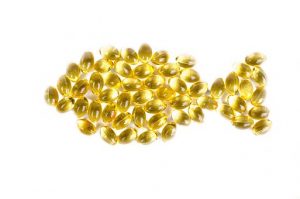Age-related macular degeneration (AMD) is a disease that, in Western countries, is the leading cause of visual impairment in individuals over the age of 65.
AMD is an etiologically complex disease: many environmental, behavioural and genetic factors influence its onset and progression. Several studies have focused on the search for new therapeutic strategies that can prevent or delay the onset or development of the disease. In particular, some recent research has highlighted a correlation between lipid and lipoprotein metabolism genes and the onset of AMD.
The results of the review of studies conducted to date, summarised here, on dietary and circulating lipids, together with the results of genetic and Mendelian randomisation studies, support the hypothesis of a Role of circulating lipoproteins and local retinal lipid trafficking in the pathogenesis of AMD.
Research shows that some nutrients with antioxidant propertiessuch as lutein and zeaxanthin, vitamins C, E and zinc and long-chain omega-3 polyunsaturated fatty acids (omega-3 LC-PUFA), eicosapentaenoic acid (EPA) and docosahexaenoic acid (DHA) contribute to the reducing the risk of AMD. Epidemiological studies have, in fact, identified the existence of a relationship between the intake of dietary omega-3 PUFAs (omega-3 LC-PUFAs as EPA + DHA) and the reduction of the risk of AMD; however, despite the protective effect, analyses conducted on supplemented PUFAs have shown conflicting results. It remains unclear, therefore, which populations might benefit most from fatty acid supplementation and which supplementation might be optimal in one country or ethnic population compared to another.
In the daily diet, lipids are generally consumed in combination with other nutrients that can directly influence their metabolism; in support of this, recent studies have shown that the Mediterranean-type diet, rich in PUFAs and antioxidants, can help reduce the onset and progression of AMD. One explanation could lie in the fact that 20% of the dry weight of the retina is composed of lipids, and at least 50% of these are unsaturated fats, therefore, lipid oxidation is assumed to play a role in the pathological processes of AMD. It has been hypothesised that endogenous and dietary antioxidants could play a crucial role in defence against damaging free radicals, as antioxidants counteract lipid peroxidation by hindering or eliminating reactive oxygen species and blocking radical chain propagation. Nutrient intake through diet showed a significant improvement in defence against AMD, but further observational and clinical studies will be needed to better understand and characterise the specific role of PUFAs.
The literature review to date does not fully clarify whether dietary lipid intake and circulating lipoprotein levels are directly associated with the risk of developing AMD. An association between circulating HDL-C and AMD has been described, but it is difficult to determine unequivocally what role serum lipid particles play in the disease. The Genetic studies have reported associations with variants in several genes involved in lipid metabolism; Mendelian randomisation studies have indicated a Causal role of long-term high HDL-C levels in increased risk of AMD. However, these studies have shown that variants of the transfer protein for cholesteryl esters (CETP) and hepatic lipase (LIPC), associated with high HDL, showed opposite effects on AMD. This might suggest that these gene variants have a local effect on retinal lipid metabolism; This hypothesis is supported by the high cholesterol load in photoreceptors and the expression, in the retina, of many of the genes associated with AMD (ABCA1, CETP, APOE) and implicated in the constitution of the local lipid trafficking machinery.
Not even the effects of lhypoproteins circulating retinal lipid accumulation have yet to be well understood in humans, despite having been studied in several model systems. The difficulty arises, not only for the variability of animal plasma lipoprotein profilesbut also because of their differences with respect to human profiles, which therefore makes their translation and projection difficult.
The future perspective involves metabolomics and, in particular, lipidomics investigations that might help to understand the systemic effect of genetic variantsas has been the case with other complex diseases. Furthermore, the use of lipidomics could clarify, in cellular models, the intricate role of the retinal pigment epithelium (RPE) in the control of retinal lipid homeostasis. It is known that both the RPE and photoreceptors are able to synthesise their own cholesterol via the tightly regulated mevalonate pathway; the retina, on the other hand, only produces the 72% of cholesterol it needs and acquires the remaining lipids from the circulation. Since the RPE contributes to the retinal barrier, it must control lipid homeostasis through the creation and efflux of lipoprotein particles, what remains unknown is to what extent the systemic circulation affects retinal lipid homeostasis.
The numerous studies on the subject have led to significant progress in understanding the lipid/DMLE association, but it remains to be clarified whether the target of a possible new therapeutic strategy may be systemic lipoprotein metabolism, local lipid metabolism in the retina, or both.
Bibliography
-A new perspective on lipid research in age-related macular degeneration. EM van Leeuwena et al. Progress in Retinal and Eye Research. May 2018.
Dr. Carmelo Chines
Direttore responsabile

